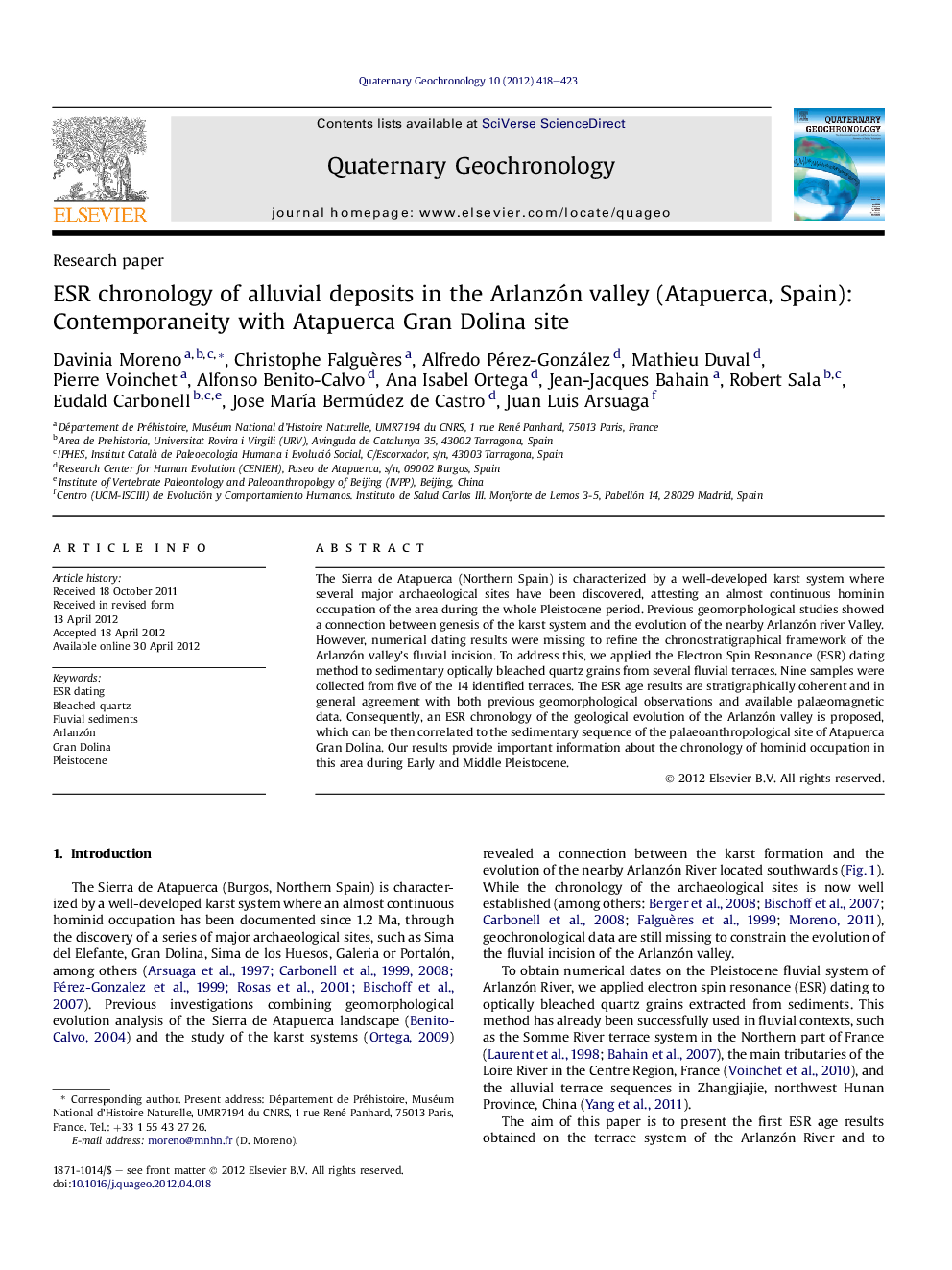| Article ID | Journal | Published Year | Pages | File Type |
|---|---|---|---|---|
| 4725155 | Quaternary Geochronology | 2012 | 6 Pages |
The Sierra de Atapuerca (Northern Spain) is characterized by a well-developed karst system where several major archaeological sites have been discovered, attesting an almost continuous hominin occupation of the area during the whole Pleistocene period. Previous geomorphological studies showed a connection between genesis of the karst system and the evolution of the nearby Arlanzón river Valley. However, numerical dating results were missing to refine the chronostratigraphical framework of the Arlanzón valley's fluvial incision. To address this, we applied the Electron Spin Resonance (ESR) dating method to sedimentary optically bleached quartz grains from several fluvial terraces. Nine samples were collected from five of the 14 identified terraces. The ESR age results are stratigraphically coherent and in general agreement with both previous geomorphological observations and available palaeomagnetic data. Consequently, an ESR chronology of the geological evolution of the Arlanzón valley is proposed, which can be then correlated to the sedimentary sequence of the palaeoanthropological site of Atapuerca Gran Dolina. Our results provide important information about the chronology of hominid occupation in this area during Early and Middle Pleistocene.
► First ESR age results obtained on the Arlanzón River stepped-terraces system. ► Significant contribution to the chronological framework of the region of Sierra de Atapuerca (Burgos, Spain). ► Application of the equation (SSE + LIN) for dose–response curves of quartz grains. ► First attempt of correlation with the Atapuerca Gran Dolina site.
